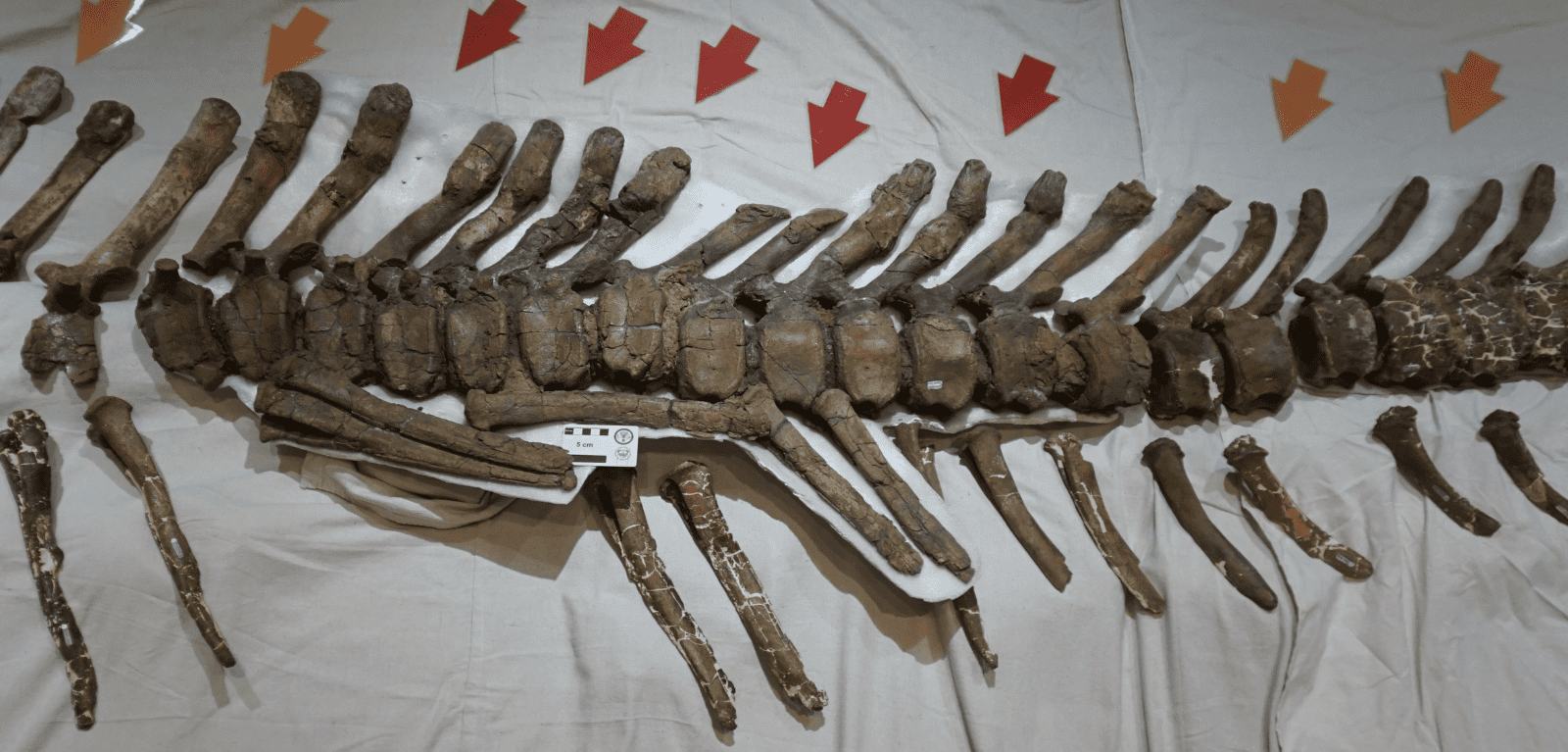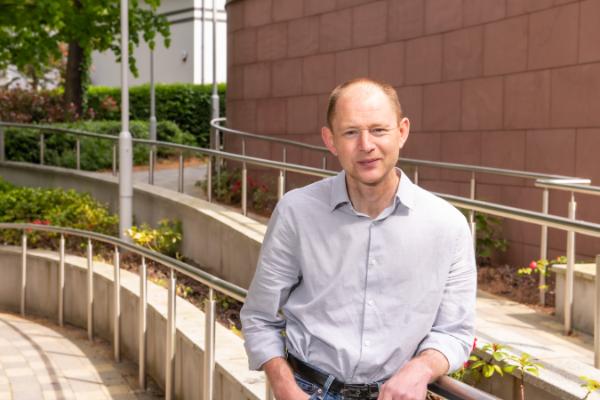Mating injuries lead scientists to identify female dinosaurs
Traumatic bone injuries in the tails of so-called duckbilled dinosaurs have led scientists to a major discovery – they believe they can now identify the bones as female.

Palaeontologists have been trying to identify female and male dinosaurs for decades, but it is very difficult to determine.
Queen’s researchers have been working as part of an international team of palaeontologists, to analyse one of the most successful groups of dinosaurs, the herbivorous hadrosaurs.
Using statistics and computer simulation, they have found that a common pattern of bone fractures at the dinosaurs’ tail were likely caused during mating, where the male dinosaur crushed the backbones of the female.
Dr Filippo Bertozzo began studying duckbill dinosaur pathologies for his PhD research at Queen’s. He now works at the Institute of Natural History in Brussels and has published these new findings in iScience – the paper is co-authored with Professors Eileen Murphy, Dr Gareth Arnott and Dr Alastair Ruffell.
In 2019, during a research visit to Blagoveschensk, Russia, Bertozzo was studying a large hadrosaurid with an ornate fancy head crest, Olorotitan arharensis. He noticed that many of the Olorotitan’s tail vertebrae showed healed fractures on their spines.
‘Peculiar situation’
Dr Bertozzo explains: “I was puzzled by the observation. I have seen this pattern in other similar species, but only in isolated vertebrae. Here, the fractures were visibly concentrated in the vertebrae at the upper end of the tail, without extending down to its tip.”
Professor Eileen Murphy comments: “It is indeed a peculiar situation. Often when you find a caudal vertebra from the upper end of a hadrosaur tail, there is a strong chance of it bearing a healed injury. This is a clear pattern, and we set out to try to explain its cause.”
Since 1979, Canadian palaeontologist Darren H. Tanke has been collecting hadrosaurid remains from Dinosaur Provincial Park in Alberta, Canada. He also discovered several injured caudal tail vertebrae and in 1989 formulated an explanation for the pattern.
However, his observation was based on a limited number of specimens and species, all from North America. Even though it was fascinating, the hypothesis could not stand up to scientific scrutiny at the time.
That was until 2019 when Bertozzo contacted him and invited him to collaborate on the project.
‘Game changer’
The new study is based on about 500 pathological tail vertebrae from different hadrosaur species from North America, Europe and Russia.
The appearance of the backbone injuries is strikingly similar between species, showing a vertical-to-oblique injury, likely caused by vertical pressure having been placed on the tip of the vertebral spinous process.
However, these injuries were not fatal as many specimens have injuries with signs of healing. In some cases, the bones even displayed evidence of a second injury indicating repeated behaviour.
Professor Gareth Arnott from Queen’s provided expertise on animal behaviour, drawing comparisons on the behaviour observed in modern species with that likely occurring in dinosaur ancestors. He comments: “Aggressively pursuing a female during reproduction might sound evolutionary disadvantageous for the continuation of the species but we already witness similar occurrences in many modern species, such as in sea lions, turtles, and some species of birds. Reproductive competition is one of the most complicated topics in animal biology, especially for extinct species.”
Bertozzo adds: “If the mating hypothesis is correct, we can infer that an individual with the injuries is female. This will be a game changer since it will enable other questions to be answered about differences between male and female dinosaurs.”
Further development of the study, with a wider dataset, is planned to gain an even greater understanding.

Professor Gareth Arnott
Media
For media enquiries, please contact emma.gallagher@qub.ac.uk
